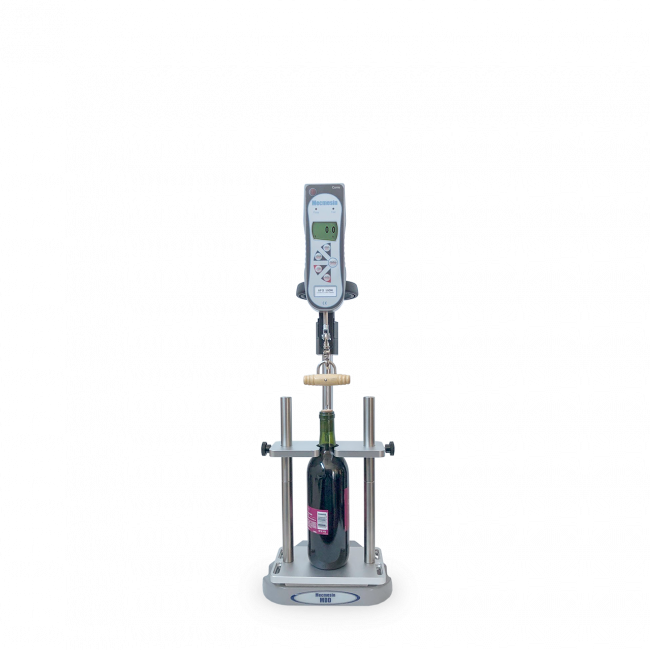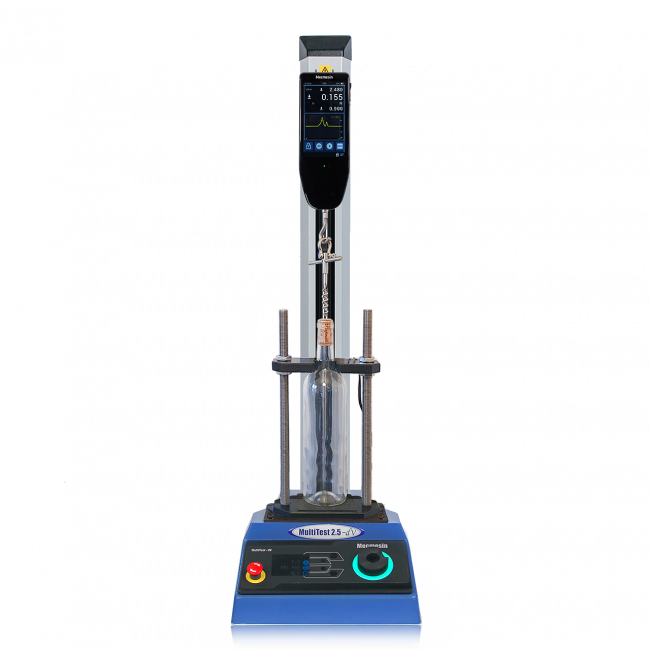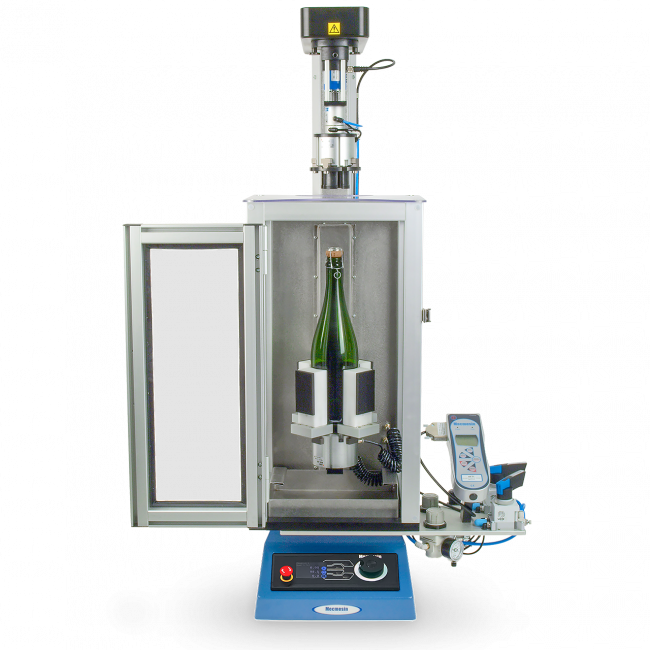Sparkling wines and champagne are normally tested to industry guidelines for their cork extraction characteristics by measuring the twist strength to get the cork rotating. This is known as the opening torque.
Testing the extraction force or the opening torque can easily be performed on one of Mecmesin's tensile and torque testers.
Cork stopper and extraction testing
Producers of cork (natural, synthetic or technical) need to tailor their stoppers according to the wines they will seal.
Getting the right coating for the cork is vital to its frictional properties when it's inserted into a bottle and later extracted by the consumer.
Not to mention ensuring the cork has the correct elasticity to allow expansion when a top-vintage is to be stored for decades before drinking.

Cork extraction testing rig
A cork extraction test rig is used to test the extraction force of bottle stoppers, mounted on either a motorised or manual test stand.
It has a bottle cradle with an antislip surface and is easily adjusted to accommodate different bottle heights, e.g. 200 ml to 750 ml.
It is used in conjunction with corkscrew test accessories suitable for testing natural and synthetic corks.
Additional testing guidelines and standards
The ISO 9727 test standard addresses 'cork-extraction force' and 'dimensional recovery after compression' testing, both of which are easily performed on Mecmesin's range of tensile and compression testers.
Torque testing industry guidelines for champagne corks are also in place to help producers verify the corks are not so tightly inserted they cannot be removed and, worse still, that they don’t pop out too easily and cause injury.





